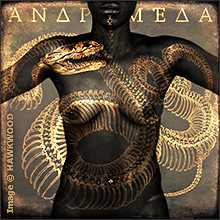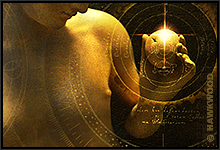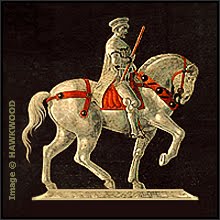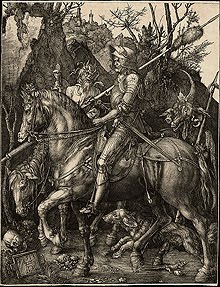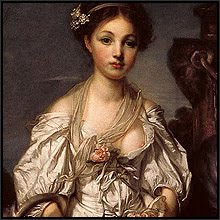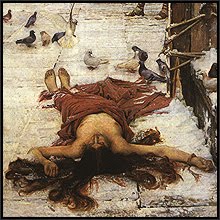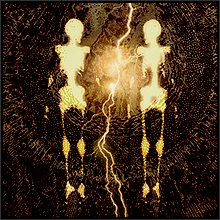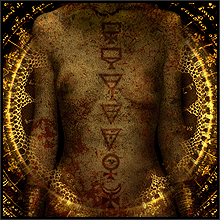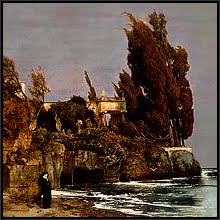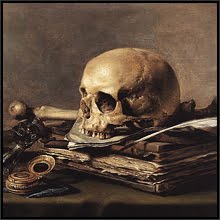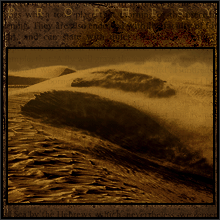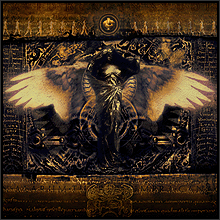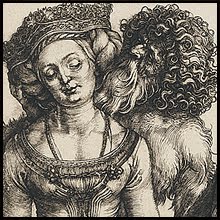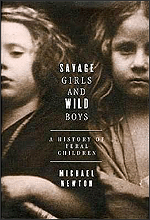 Film director Luis Buñuel coined the perfect phrase for that common experience which we all have of encountering such everyday objects. Buñuel called it 'the thingness of things'. Whether these objects happen to be a dining table, or the pieces of fruit in a bowl that sits upon that table, they occupy the same familiar material reality as we ourselves do.
Film director Luis Buñuel coined the perfect phrase for that common experience which we all have of encountering such everyday objects. Buñuel called it 'the thingness of things'. Whether these objects happen to be a dining table, or the pieces of fruit in a bowl that sits upon that table, they occupy the same familiar material reality as we ourselves do. When artists set out to describe this 'thingness' in an image, the result is a still-life (the painting of apple blossoms which includes a not-so-still living lizard, two butterflies and a caterpillar by Balthasar van der Ast, above). Now to be honest, this was one subject which, when we were given such an assignment at art school, I practically had to jab myself with my pencil to prevent myself from dozing off with boredom. But although my own choice of subject matter lies in other directions, and a tastefully arranged empty bottle, a china jug and a fruit bowl don't really do it for me, there certainly are any number of artists who have chosen to make this particular province of art their own.
When artists set out to describe this 'thingness' in an image, the result is a still-life (the painting of apple blossoms which includes a not-so-still living lizard, two butterflies and a caterpillar by Balthasar van der Ast, above). Now to be honest, this was one subject which, when we were given such an assignment at art school, I practically had to jab myself with my pencil to prevent myself from dozing off with boredom. But although my own choice of subject matter lies in other directions, and a tastefully arranged empty bottle, a china jug and a fruit bowl don't really do it for me, there certainly are any number of artists who have chosen to make this particular province of art their own. What could be more ordinary than a bundle of asparagus? But when that asparagus is painted by Adriaen Coorte (above), its stark simplicity and luminous lightfall seem to generate a compelling power: a true manifestation of its 'thingness'. As, for the same reason, do the three salmon steaks by Francisco Goya (below). The intensity of these works (their 'asparagus-ness', their 'salmon-steak-ness') is only increased by the artists' choice of dramatic velvet-shadowed backgrounds.
What could be more ordinary than a bundle of asparagus? But when that asparagus is painted by Adriaen Coorte (above), its stark simplicity and luminous lightfall seem to generate a compelling power: a true manifestation of its 'thingness'. As, for the same reason, do the three salmon steaks by Francisco Goya (below). The intensity of these works (their 'asparagus-ness', their 'salmon-steak-ness') is only increased by the artists' choice of dramatic velvet-shadowed backgrounds. If Goya's empty blackness daringly fills half of the space of his composition, what are we to make of Juan Sanchez Cotán's bizarre still-life featuring a quince, a cabbage, a melon and half a cucumber (below)? The eye of the viewer slides uncomfortably down the suspended quince and cabbage to land upon the ledge of the niche where the cut melon and a fat green gherkin are lying. The intense black nothingness which swallows up most of the space seems almost shocking. I am left wondering just how startling the artist intended his off-beat composition to be. It was, after all, painted four hundred years ago!
If Goya's empty blackness daringly fills half of the space of his composition, what are we to make of Juan Sanchez Cotán's bizarre still-life featuring a quince, a cabbage, a melon and half a cucumber (below)? The eye of the viewer slides uncomfortably down the suspended quince and cabbage to land upon the ledge of the niche where the cut melon and a fat green gherkin are lying. The intense black nothingness which swallows up most of the space seems almost shocking. I am left wondering just how startling the artist intended his off-beat composition to be. It was, after all, painted four hundred years ago! All those years ago, fresh game was a normal item on the European menu. That game included fowl, and fowl regularly found their way, not only onto the dinner plates, but onto the canvases of still-life subjects. Frans Cuyck van Myerop's treatment of what to our contemporary eyes is perhaps a strange choice of subject matter (below) is certainly more original than most. These two birds (I'm guessing that they are a small woodcock and a *bittern) hang against a white plaster wall, their shadows giving them a three-dimensional reality that is further enhanced by the artist's clever use of a painted black frame into which the wing of the bittern intrudes. At least dead things have the advantage of keeping nice and still while they're being painted, and the artist's treatment of the plumage textures and patterns is masterfully convincing without the brushwork being laboured.
All those years ago, fresh game was a normal item on the European menu. That game included fowl, and fowl regularly found their way, not only onto the dinner plates, but onto the canvases of still-life subjects. Frans Cuyck van Myerop's treatment of what to our contemporary eyes is perhaps a strange choice of subject matter (below) is certainly more original than most. These two birds (I'm guessing that they are a small woodcock and a *bittern) hang against a white plaster wall, their shadows giving them a three-dimensional reality that is further enhanced by the artist's clever use of a painted black frame into which the wing of the bittern intrudes. At least dead things have the advantage of keeping nice and still while they're being painted, and the artist's treatment of the plumage textures and patterns is masterfully convincing without the brushwork being laboured. The artist Cornelis Gijsbrechts presents us with a still-life as curious as it is inventive (below). For the still-life is a painting which actually features a still-life painting within it as part of the still-life. Central in the composition is a rather conventional still-life painting of grapes and other fruit. But the painting, which is peeling away from its wood mount (a trademark touch in Gijsbrechts' art), in its turn shares a shelf with the belongings of the artist: his palette and brushes, rag and glass dipper (for linseed oil), and his clay pipe and tobacco tin. And on the wood panel next to the painting the artist himself puts in a cameo appearance as a portrait miniature. Gijsbrechts' painting manages to be at the same time both charming and rather disconcerting, stranding the viewer in an uneasy no-man's-land between different visual illusions.
The artist Cornelis Gijsbrechts presents us with a still-life as curious as it is inventive (below). For the still-life is a painting which actually features a still-life painting within it as part of the still-life. Central in the composition is a rather conventional still-life painting of grapes and other fruit. But the painting, which is peeling away from its wood mount (a trademark touch in Gijsbrechts' art), in its turn shares a shelf with the belongings of the artist: his palette and brushes, rag and glass dipper (for linseed oil), and his clay pipe and tobacco tin. And on the wood panel next to the painting the artist himself puts in a cameo appearance as a portrait miniature. Gijsbrechts' painting manages to be at the same time both charming and rather disconcerting, stranding the viewer in an uneasy no-man's-land between different visual illusions. Both van Hoogstraten and Gijsbrechts (and in the image shown here, also Cuyck van Myerop) specialised in the form of still-life known by the French phrase tromp-l'oeil (literally: 'fools-the-eye'), in which visual sleight-of-hand is used (painted frames and shadows, etc.) to confuse what is real and what is part of the painting. But it is not so much the eye which is fooled, as it is the brain which interprets - or misinterprets - what the eye is seeing, challenging our confidence to define exactly where reality ends and illusion begins.
Both van Hoogstraten and Gijsbrechts (and in the image shown here, also Cuyck van Myerop) specialised in the form of still-life known by the French phrase tromp-l'oeil (literally: 'fools-the-eye'), in which visual sleight-of-hand is used (painted frames and shadows, etc.) to confuse what is real and what is part of the painting. But it is not so much the eye which is fooled, as it is the brain which interprets - or misinterprets - what the eye is seeing, challenging our confidence to define exactly where reality ends and illusion begins.
Artist: Samuel van Hoogstraten
Work: Tromp-l'oeil Still-Life, 1664
Medium: Oils
Location: Dordrechts Museum, Dordrecht
Artist: Balthasar van der Ast
Work: Still-Life with Apple Blossoms, 1635
Medium: Oils
Location: Staatliche Museum, Berlin
Artist: Adriaen Coorte
Work: Asparagus, 1697
Medium: Oils
Location: Rijksmuseum, Amsterdam
Artist: Francisco Goya
Work: Three Salmon Steaks, 1808-12
Medium: Oils
Location: Oskar Reinhart Collection, Winterthur
Artist: Juan Sanchez Cotán
Work: Still-life with Quince, Cabbage, Melon and Cucumber, c.1600
Medium: Oils
Location: Museum of Art, San Diego
Artist: Frans Cuyck van Myerop
Work: Still-Life with Fowl, 1670's
Medium: Oils
Location: Groeninge Museum, Bruges
Artist: Cornelis Gijsbrechts
Work: Still-Life with Self-Portrait, 1663
Medium: Oils
Location: National Gallery, Prague
The Coorte image is from the Rijksmuseum website. All other images are from the Web Gallery of Art.
*The bittern (Botaurus stellaris) is now on the list of endangered species with a Red status (in severe decline and at serious risk), and has become one of the rarest of British breeding birds. The woodcock (Scolopax rusticola) is on the endangered list with an Amber status (in general decline). Source: Royal Society for the Protection of Birds.



